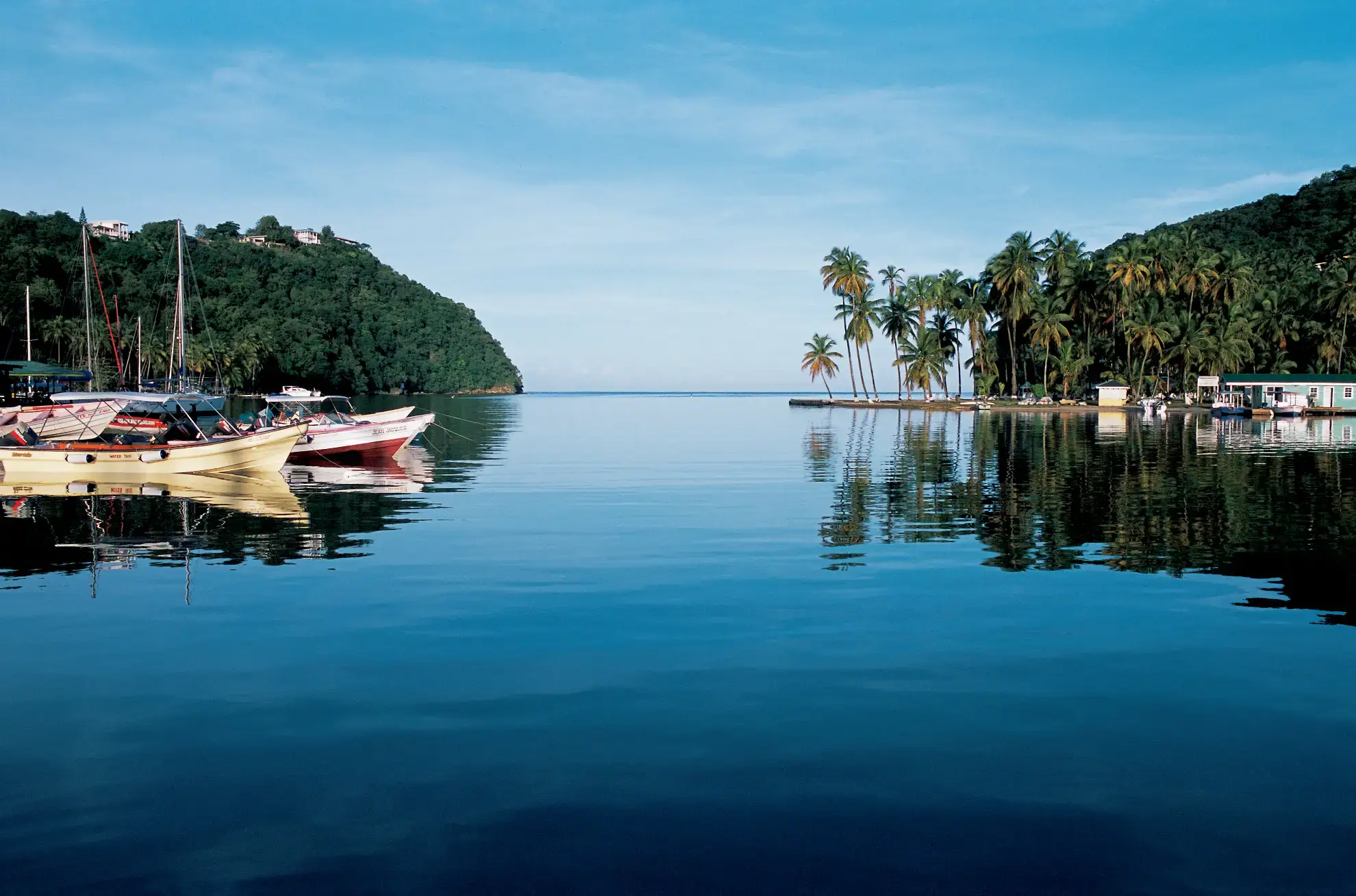A Heritage and Cultural review
After the dramatic Pitons, Marigot Bay is the second most photographed location in St Lucia’s tourism literature and has a remarkable heritage and local culture.
THE HELEN OF THE WEST INDIES
Because of its stunning natural beauty, St Lucia is known as ‘The Helen of the West Indies’ a treasure which was fought over 14 times for possession by the British and French and finally resolved by the British victory in the battle of Cul de Sac in 1778.
Legend has it that Admiral Barrington’s fleet hid in Marigot Bay behind the sand-spit, disguising their ships with palm fronds in the rigging - an early example of camouflage - until the French fleet had sailed past and then left Marigot to attack the French from the rear. Historical accounts suggest that more of the action took place in Cul de Sac Bay just to the north but we like the legend best!
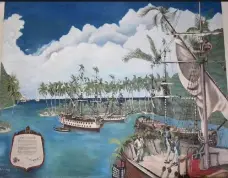
The Marigot story was captured in a huge mural which hung in the Hurricane Hole Hotel in Marigot Bay but disappeared during renovations when it was scheduled to transfer to the Governor General’s Mansion.
PIRATES AND REFUGE
The hidden inner Marigot Bay, sheltered by the sand-spit, and the surrounding hills is a perfect “Hurricane Hole”, a refuge for boats in stormy weather. Historically it was frequented by Pirates and legend tells of a treasure ship, racing for shelter during a storm, but never made it to the inner bay. For many years divers have searched for that boat and its treasure without success, until a gold Doubloon was washed up on La bas Beach. Unfortunately it was sold in Martinique and since nobody could agree on its ownership, any possibility of establishing its provenance was lost, but the legend lives on...
Marigot Bay is still the safest refuge in the Eastern Caribbean during severe storms and hurricanes. In times gone by, local people claim that a sufficient number of boats tied up in Marigot Bay in such weather made it possible to walk across the inner bay from boat to boat and the local bars served rum punch in dustbins to meet the demand.
THE SECOND WORLD WAR
During the Second World War St Lucia was used as a re-provisioning location for merchant ships crossing from Europe and Africa to the United States.
In March 1942 a German U-boat, supported from Martinique by the French Vichy regime, entered Castries Harbour and torpedoed two merchant ships, the Lady Nelson and the Umtata - which was en route from South Africa to the US with a cargo of chrome ore for the war effort. Both ships sank in Castries Harbour with significant loss of life of crew and port workers. Local legend has it that the U-boat then sailed to Marigot and surfaced in the inner bay for the crew to take some “Rest & Recreation”.
At the time, Marigot was not accessible by road and inhabited by only a few fishermen who were probably disconnected from the war effort and more amused than threatened by the incident.
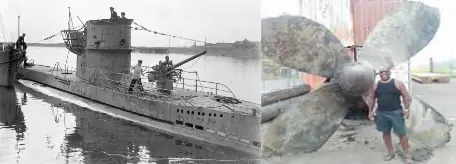
The propeller and anchor of one of the boats were recently raised during a dredging exercise to deepen the harbour for Cruise Ships and it is hoped that these will be restored and displayed in a park on the harbour-side to commemorate the part St Lucia played in the war. Complete Marine Services (“CMS”), the marine engineering company which recovered the relics, is based in Marigot and maintains a strong interest in seeing the vision fulfilled.
‘The Voice’, the local newspaper, records that the U-Boat commander returned to
St Lucia in the late 1960s as a tourist — and before leaving, posted a letter to
The Voice, in which he stated his remorse and offered his sincere apologies. He is also reported to have been involved in the ownership of the German-developed Steinberger, Cariblue Hotel, in the north of St Lucia, which subsequently morphed into the present Le Sport - BodyHoliday Hotel.
AFTER THE WAR, MARIGOT BEGINS TO DEVELOP THE FAME IT DESERVES
MOVIES AND CELEBRITIES
After the war, word got around that Marigot Bay was more than just a place for a brief but interesting visit. In fact, it became so famous that first time tourists often experience a jolt of recognition.
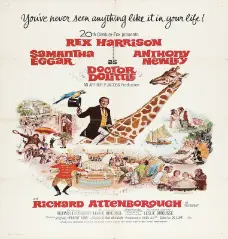
Celebrities had started to use it as a place to have fun but also as a movie location, the best known being the tropical island scenes of the original 1967 ‘Doctor Dolittle’, starring Rex Harrison, Samantha Eggar and Anthony Newley. The ‘Pink Snail’ floated on the water in Marigot for long after the movie was completed and a piece of the original Pink Snail is displayed on a wall at the “Doolittles” bar and restaurant at Marigot Beach Club for all to see.
Other movies followed including ‘Water’ starring Michael Caine, ‘Fire Power’ with Sophia Loren, and a few scenes of ‘Pirates of the Caribbean’ with Johnny Depp.
Several actors and celebrities like George Foreman, fell so much in love with the bay that they built beautiful villas with wonderful views and, in turn, inspired boat loads of visitors who wanted to come and see the stars…
Since the redevelopment of the Marigot Bay marina in 2005, the stars are now visiting Marigot on their superyachts - leading to guessing games as to ...” who is on that 300ft. Mega-yacht?”
Oprah Winfrey, Nicholas Cage and Michael Caine have been seen and Eddie Murphy preserves his privacy on his yacht by sending a body-double to go out and mix with the “riff raff”..!
CAPTAIN WALTER BOUDREAU & THE BOUDREAU FAMILY
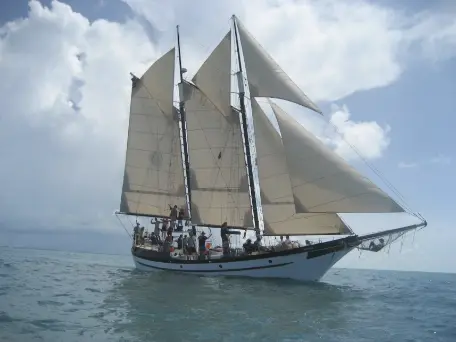
The modern development of Marigot Bay started when Captain Walter Boudreau,
a buccaneering schooner skipper, made Marigot his base in the early 1960’s.
Captain Boudreau restored the legendary schooner “Yankee”, probably the most famous schooner in the world, as the flagship of his Nova Scotia Windjammer Cruises fleet - made famous in the books “Where the Trade Winds Blow’ and “The Man who Loved Schooners” by his son Captain Lou Boudreau.
Walter sailed for many years through all the Caribbean islands including a number of visits to Marigot Bay in the schooners “Doubloon” and ”Caribee”. Recognising that “Marigot was unique with an almost magical aura about it” (quoted from the Man who loved Schooners) Walter decided to make Marigot Bay his home and sailing base. In 1959 he bought land on the south side of the bay and built a family home - now the Cliff House, the furthest house to the ocean on the south-side ridge and shortly after, built the Yacht Haven Hotel to provide land-based support for his prospering yacht charter business.
HIGH LEVEL RETREATS IN MARIGOT
The seclusion of Marigot Bay and the ease with which it could be made secure led to some fascinating events. Contacts developed with wealthy American clients through yacht chartering, led to contacts with US Presidents and leading politicians, resulting in The Yacht Haven Hotel being used for a number of political retreats and then hosting the US astronauts for R&R and debriefing after the Apollo 17 moon landing in 1972.

Gene Cernan, the last man to walk on the moon, gave a model of Apollo 17
to the Yacht Haven Hotel, which was recently returned to Captain Lou Boudreau, Walter’s son, by the Verity family who redeveloped the hotel in 2004 - 6.
With the Captain and his wife often away, hosting and sailing their illustrious guests, the six Boudreau children lived a “Robinson Crusoe” type lifestyle in Marigot, fishing, sailing and swimming with the local kids, learning patois and playing truant from school.
Lou, the eldest, followed in his father’s footsteps as a schooner captain and saw out
the death of that industry before committing his memories to a series of books recounting his father’s exploits and combining sailing experience with fiction in his final novel, “Fandango’s Gold”.
HOTEL DEVELOPMENTS
The Yacht Haven Hotel was eventually acquired by The Moorings Company, a US and Caribbean-wide yacht charter company, who developed a small marina on
the south side of the bay to accommodate their yachts.
The hotel was renamed the Hurricane Hole Hotel and its main feature, the Hurricane Hole Bar, became an iconic bar, known by sailors throughout the Caribbean.
In 2000 the old hotel and marina was purchased by the Verity family from the UK
and in 2004 - 6 redeveloped into a 124 key apartment hotel known as “Discovery at Marigot Bay” together with the new Superyacht Marina and Marina Village.
The Hotel has passed through a number of hands over the last 17 years and has recently been rebranded Zoëtry - a “high-end”, All-Inclusive brand of AMR Resorts (Apple Leisure Group) now part of the Hyatt organisation.
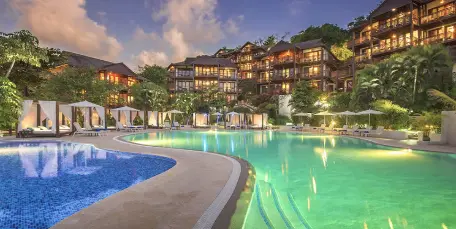
In all this, the Hurricane Hole bar, restored to its original glory in the original Discovery redevelopment, was demolished and lost to the Marigot Bay heritage. Disappointed by this wanton destruction, the original Hurricane Hole Bar sign was recovered by the Verity family and presented by their grand-children to the children of the Rambally family, the owners of Chateau Mygo, who briefly renamed their bar “Chateau Hurricane Hole” until the new owners of Discovery took legal action to restrain them from trading under that name, such was its significance.
The name “Hurricane Hole Bar” has now been assigned to Zoëtry’s bar/restaurant in the marina village - the only part of Zoëtry open to the public; a pleasant enough bar
but not one the sailors of old would recognise. Another icon of the old Caribbean lost to modernisation!
Other “characters” in the Bay include JJ (Gerard Felix) who spent many years on sailing boats in the Mediterranean before returning to set up his own Bar, Restaurant, and JJ’s Paradise hotel at the eastern end of the Bay, and David Shimeld, the owner of Marigot Beach Club and Dive Resort on the beach - a former London night club owner, once married (he claims) to a “Bond Girl”.
FUN ON THE BEACH
At first, Labas (the beach in Patois) was known to all the local people as the ‘place down there’. When somebody said they’re ‘going down there’ it usually meant they were ‘going down to ‘lime’ on the beach for a while’. It’s a public beach so it’s shared with local families, day trippers from cruise ships and guests from hotels and Inns.
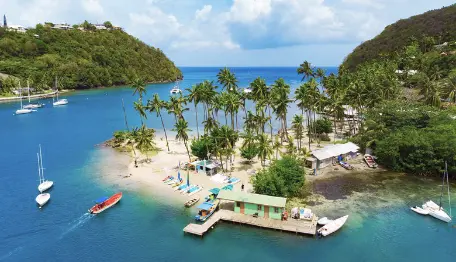
Today the beach has a water-sports hut with a range of hobie cats, canoes, paddle boards and snorkelling gear for hire - and some vendor huts selling local food and drinks.
The shelf on the western (outer) side of the beach spit is relatively shallow with
a roped-off swimming area. The best water quality is towards the southern end of
the beach where the sand shelves into the water.
The eastern (inner) side is given over to the ferry and boat operations and is not suitable for swimming.
OASIS AND THE RIDGE TRAIL
From Marigot Beach Club on the waterfront in the outer bay a funicular railway leads up to Oasis, with access to the Ridge Trail, an old military route for soldiers to reach a look-out point to spot enemies who might be approaching from either the north or south.
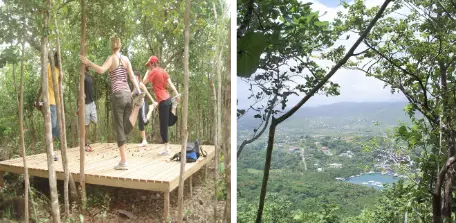
There are wonderful views from the trail which, if followed to the east, leads to a resting platform and a trail down to the east side of Mango Beach Inn and then down to the public pathway and boardwalk which connects back to the beach or to a ferry back to the south side of the bay - a fascinating and challenging circular walk which can be taken in either direction.
Strong shoes, a supply of water and go early in the morning before the sun gets too hot. In the past Mango Beach Inn has sponsored early morning Yoga sessions on the platform.
